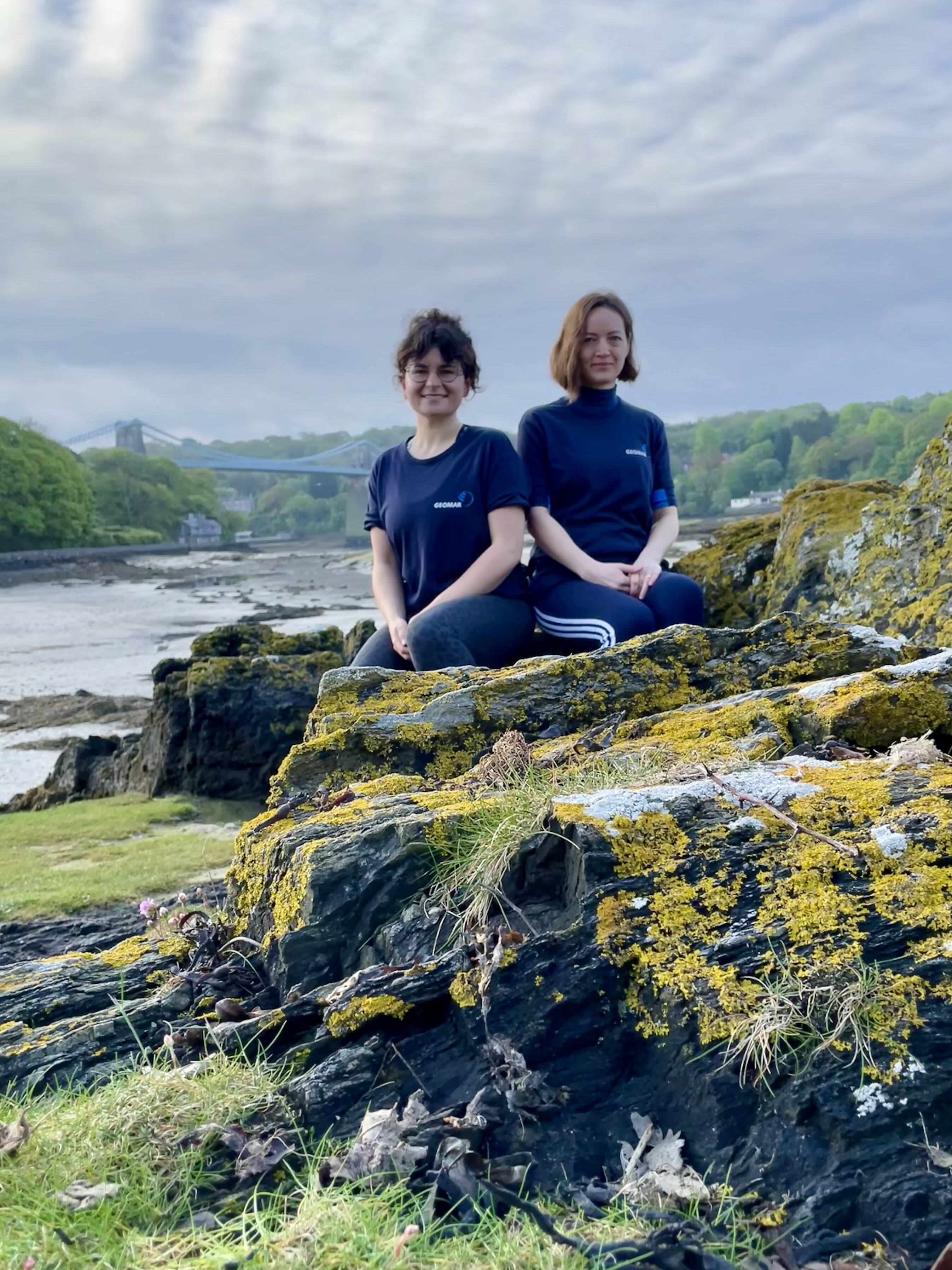Snugly tucked in between the unpredictable currents of the Menai Strait and the jagged mountain ridges of Snowdonia lies the city of Bangor. Not so much a city, but rather a small town, Bangor is home to about 10,000 citizens and another 8,000 students who bring the town to life during lecture terms. Towering over the town is Bangor University with its Victorian era Main Arts building and tiny canteen that offers a nutritious £2 meal for everyone who is willing to climb the hill during lunch time. Founded in 1884 Bangor University is a research-intensive institution and this year’s setting of our experiment on artificial light at night (ALAN) and its effect on macroalgae.




Excessive artificial light at night from urban settlements, especially in highly populated coastal areas, can scatter over long distances and illuminate even otherwise pristine coastal and marine habitats. The effects light pollution can have on these ecosystems are only little understood. So far conclusions are mostly drawn from observations and studies from terrestrial ecosystems, in which artificial light at night was found to have adverse effects on organism’s behaviour, life cycles, activity patterns as well as on biodiversity and ecosystem functions. In both the marine and terrestrial context, the focus has so far been mainly on animals, but not on plants or algae, especially not on macroalgae.
Therefore, the 2024 GAME project aims to take a closer look at a possible impact artificial light at night might have on macroalgae, in particular on their defence capacity against grazers. Besides investigating the effects of artificial light at night, we included two different mitigation measures in our experimental design. To tackle light pollution and the adverse effects it might have on macroalgae, we will test, if a reduction of the lighting times during the night and/or using a different light spectrum will make a difference.
North Wales is not only an excellent location for researching macroalgae. It also offers a variety of beaches that are still largely untouched by ALAN and are ideal for us to collect test organisms. Ideally, our algae should not yet be polluted with ALAN, so that we have a higher chance of finding an effect during our experiments.
After a little driving test to get a feel for driving on the left-hand side of the road and manoeuvring the one too many round-abouts with so far unknown rules of indicating according to the exit location, we were given access to the university pick-up truck to head out for sample collection on Anglesey Island with its many pristine bays which are rich in marine biodiversity.

In the cold clear waters around North Wales seaweeds grow in abundance which gave us plenty of choice. We will conduct our experiments with several species of brown macroalgae from the Fucoid family that can be found in the intertidal zone. To induce a defence reaction in the algae, we rely on the support of a marine gastropod mollusc also known as the common periwinkle (Littorina Littorea) which – as its name suggests – is very common on the Welsh shores.



In the past two months, we have been busy with planning, meeting, discussing and consulting with our supervisor Dr. Svenja Tidau, an expert in the field of artificial light at night, from the School of Environmental and Natural Sciences, and Dr. Stuart Jenkins, who is an experienced ecologist who knows his grazers, from the School of Ocean Sciences. With their support and thanks to their supply of several pieces of very useful equipment, we could decide on suitable macroalgae species and grazers, conduct our pilot studies, and design our experimental setup. For the latter, we were given the option to choose from different rooms in the Brambell Aquarium and eventually decided to set up our replicate tanks inside large, self-made dark chambers in the main aquarium room.
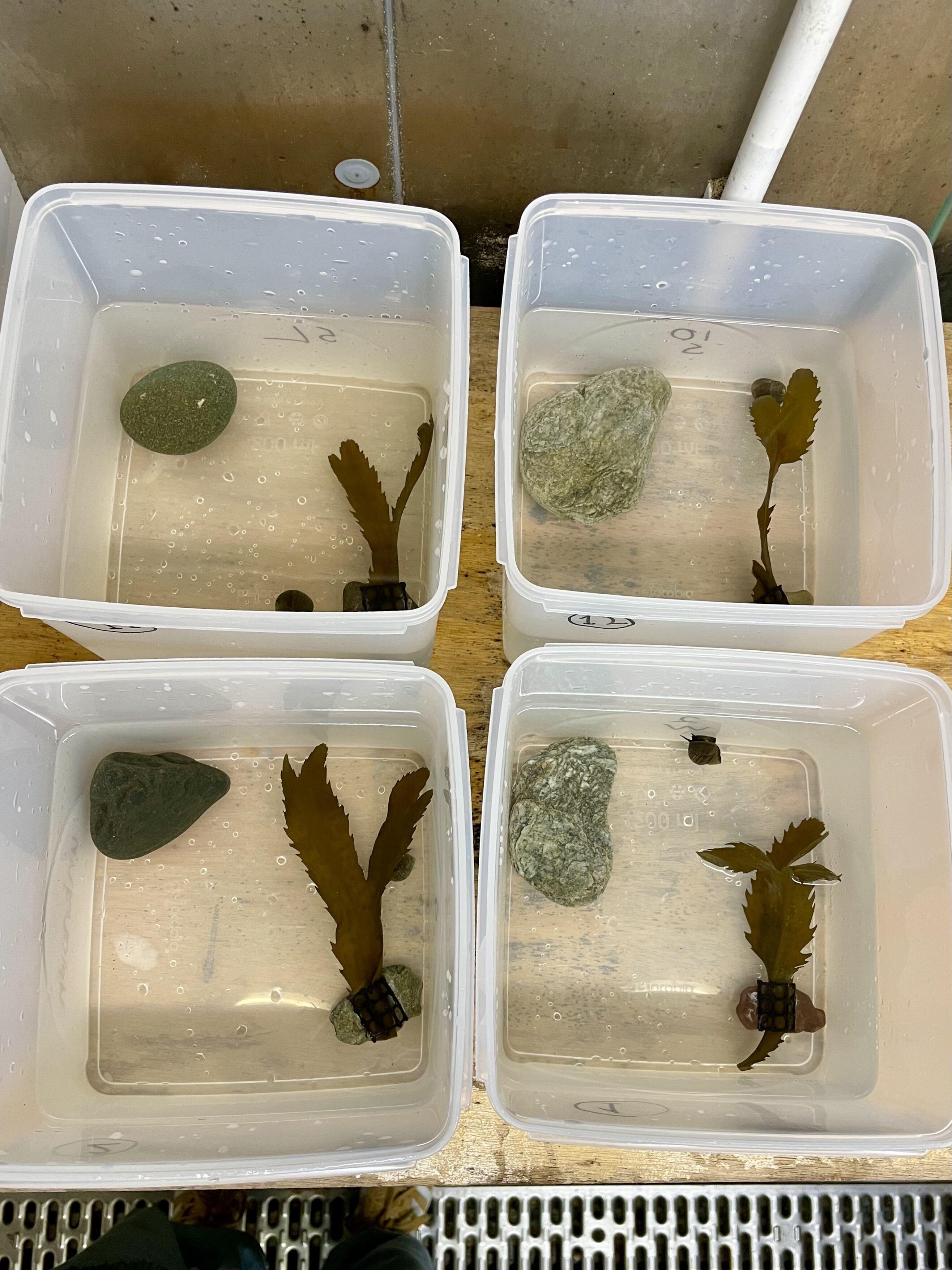


After a series of equipment hunting, DIY and online market shopping sprees, and with the indispensable assistance and advice of Mike Hayle, lab technician of the Aquarium, we managed to realise many of our creative ideas. After drilling 480 holes in 120 tanks, clipping 10 meters of hose in 310 pieces, putting them together with 70 connectors, sawing and inserting 120 plastic pipettes as water outlet, attaching 120 air stones to roughly 15 meters of air supply tubes, cutting about 47 m2 of black-out curtain, sawing 40 meters of pipes and putting them together with 50 connectors, cutting 5 transparent nets and attaching them with 20 little hooks to keep the grazers where they belong, attaching 5 rescue blankets as reflector sheets to disperse the light in the chambers more evenly, cutting 60 little pieces of mash and glueing it to 60 little stones to use as a mount for our algae, safely and water-proof placing and connecting 8 LEDS, we could finally set up.

When we’re not travelling on behalf of GAME, you’ll find us somewhere on the coast spotting seabirds and hopefully someday dolphins or basking sharks, at one of North Wales beautiful lakes, hiking in Snowdonia or enjoying a traditional British afternoon tea.
We love it here and are looking forward to staying a little longer!
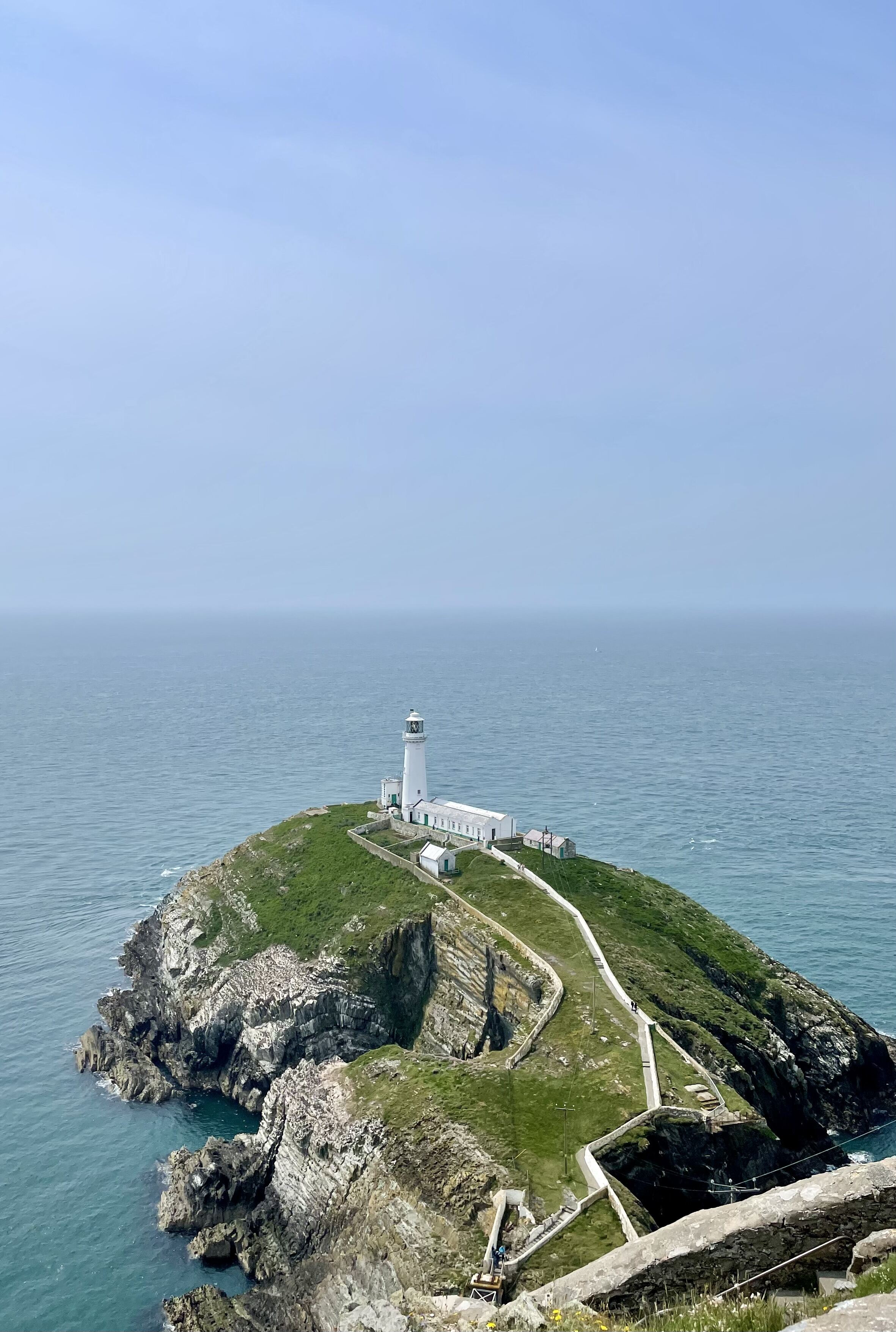

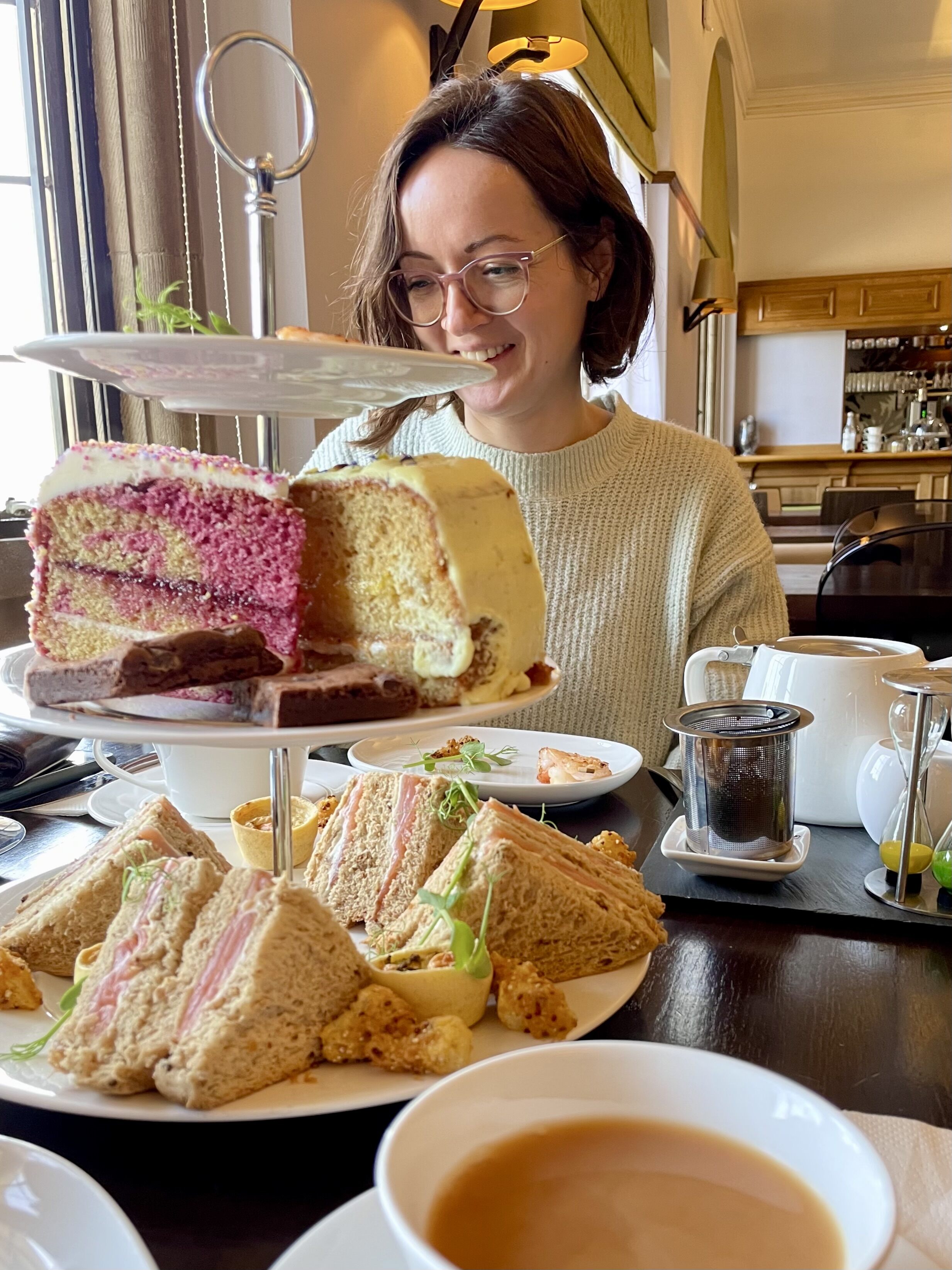
Now as the stock tanks have been set up, the organisms are well acclimated, and we are good and ready: it is time to experiment!
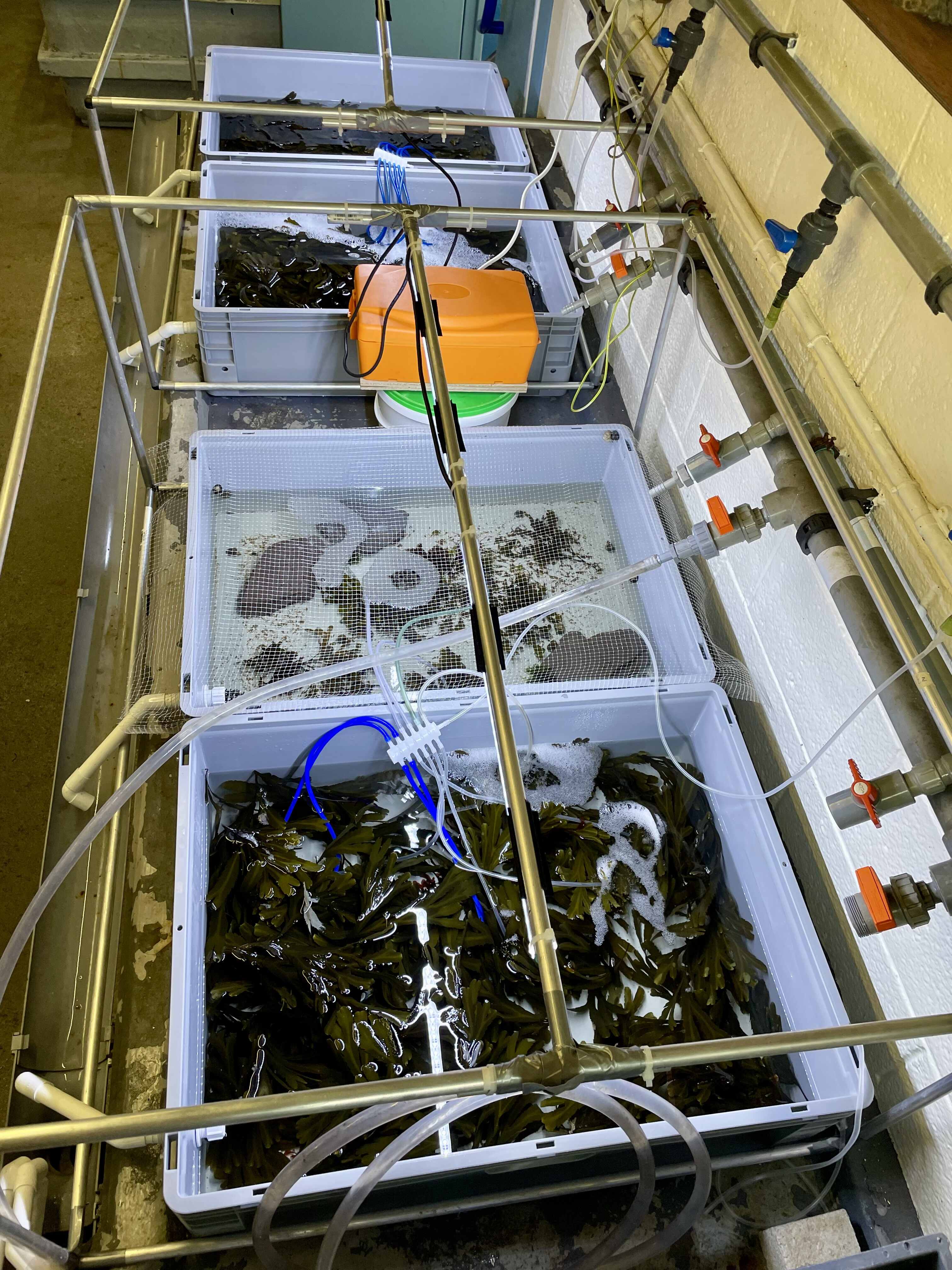
Croesi bysedd! Fingers crossed for a good start!
Camille & Barbara
